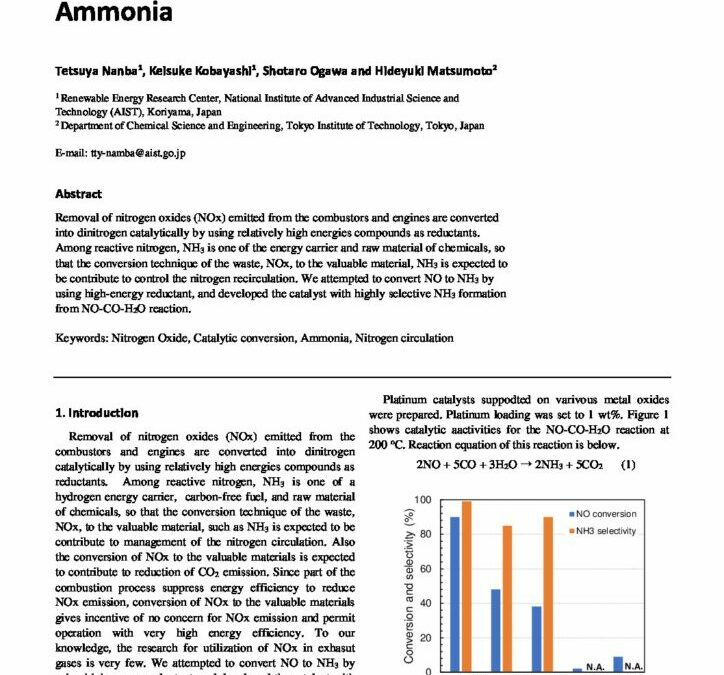Catalytic Conversion of Nitrogen Oxide to Ammonia

Removal of nitrogen oxides (NOx) emitted from the combustors and engines are converted into dinitrogen catalytically by using relatively high energies compounds as reductants. Among reactive nitrogen, NH3 is one of the energy carrier and raw material of chemicals, so that the conversion technique of the waste, NOx, to the valuable material, NH3 is expected to be contribute to control the nitrogen recirculation. We attempted to convert NO to NH3 by using high-energy reductant, and developed the catalyst with highly selective NH3 formation from NO-CO-H2O reaction.
Removal of nitrogen oxides (NOx) emitted from the combustors and engines are converted into dinitrogen catalytically by using relatively high energies compounds as reductants. Among reactive nitrogen, NH3 is one of a hydrogen energy carrier, carbon-free fuel, and raw material of chemicals, so that the conversion technique of the waste, NOx, to the valuable material, such as NH3 is expected to be contribute to management of the nitrogen circulation. Also the conversion of NOx to the valuable materials is expected to contribute to reduction of CO2 emission. Since part of the combustion process suppress energy efficiency to reduce NOx emission, conversion of NOx to the valuable materials gives incentive of no concern for NOx emission and permit operation with very high energy efficiency. To our knowledge, the research for utilization of NOx in exhasut gases is very few. We attempted to convert NO to NH3 by using high-energy reductant, and developed the catalyst with highly selective NH3 formation from NO-CO-H2O reaction.
